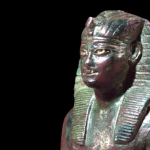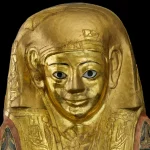The Lodger: A Viking’s Last Legacy in York

Related Videos:
The year was 1972, and archaeological work was underway in the heart of York, England, peeling back the layers of history beneath the modern city streets. What the excavators found was the remarkably preserved remains of an ancient Viking settlement, a bustling hub from the 9th century. Yet, amid the usual findings of pottery shards, jewelry, and long-rotted timbers, the archaeologists uncovered something truly unique, something that would become world-famous for its sheer, astonishing size: the largest known human excrement ever discovered.

The Massive Coprolite
This exceptional specimen, a fossilized piece of human feces known scientifically as a coprolite, was found lodged in a damp, oxygen-deprived pit—the site of an ancient latrine. Its dimensions were the stuff of legend and geological record: a daunting 20 centimeters long (nearly 8 inches) and 5 centimeters in width (2 inches). Approximately 1200 years old, this perfectly preserved specimen offered an unprecedented, intimate glimpse into the life of the person who produced it.
It quickly earned the nickname “The Lodger” and became an invaluable historical artifact. It was so massive and distinct that Andrew Jones, a paleoscatologist—a scientist who studies fossilized feces—famously noted, “This is the most exciting piece of excrement I’ve ever seen… In its own way, it is as irreplaceable as the Crown Jewels.”

A Snapshot of Viking Life
The real value of The Lodger was not its size, but the wealth of information it held. Scientists performed detailed analysis on the coprolite, which acted as a perfect time capsule of its owner’s final meals and overall health.
The findings painted a vivid, yet uncomfortable, picture of the Viking’s daily life. Analysis indicated that the owner had a fairly monotonous but substantial diet, heavily based on meat and bread. This was likely a stewed or boiled preparation of beef or pork, supplemented by coarsely ground cereal grains, consistent with the diet of a moderately well-off resident of the settlement.
However, the analysis also revealed a darker truth: the host suffered from significant intestinal infections caused by parasites. Researchers discovered large numbers of the eggs of whipworm and mawworm, clear evidence that the individual was riddled with internal parasites. This condition would have caused persistent, debilitating stomach pain, cramps, and general ill health—a common scourge in a time before modern sanitation and medicine.

The Legacy of The Lodger
The Lodger’s discovery offered a powerful, tangible link to the individual Viking who lived and suffered in York over a millennium ago. It was a piece of history that allowed scientists to move beyond the grand narratives of battles and kings to understand the gritty, everyday reality of life in the Viking age.
Today, this remarkable coprolite, which briefly held court at the York Archaeological Trust and inspired countless headlines, remains a testament to the astonishing things that can be preserved by time. It continues to be a crucial artifact, echoing the silent, painful existence of an unknown individual whose massive, fossilized legacy reminds us just how much we can learn from the most humble and unexpected historical remnants.












